Editor’s note: This article was originally published on October 12, 2020.
Just about every driver knows that tires need to be checked periodically for proper inflation. Yet studies show that a significant percentage rarely if ever do inflation checks, and that as many as one-third of vehicles on the road are driving around with at least one tire that’s seriously underinflated.
What’s the big deal? Well, underinflated tires will wear prematurely, and they can be damaged more easily by road hazards. Underinflated tires also can adversely effect vehicle handling and traction. Underinflation hurts fuel economy as soft tires increase rolling resistance.
But more to the point, an underinflated tire could kill you and your passengers. Every year, there are thousands of high-speed crashes caused by the tread separating from tire carcasses, which can happen suddenly and violently, sometimes resulting in instant blowouts, and causing the driver to lose control.
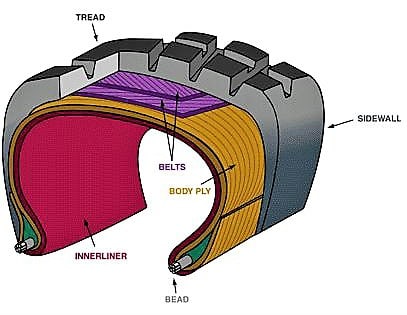
While modern steel-belted radial tires are amazing things, usually lasting tens of thousands of miles without incident, they do have an inherent issue with tread separation, particularly when they are run underinflated at highway speeds, and especially in hot weather.
“Tread separations are an unfortunate by-product of steel-belted radial tire technology,” according to the Tire Failures Resource Center, an insurance-industry group. “Due to the difficulty in obtaining adhesion of steel to rubber, there is a potential for tread separation of all steel-belted radial tires.
“Industry records verify that tread-belt separations are the most common mode of failure of steel-belted radial tires.”
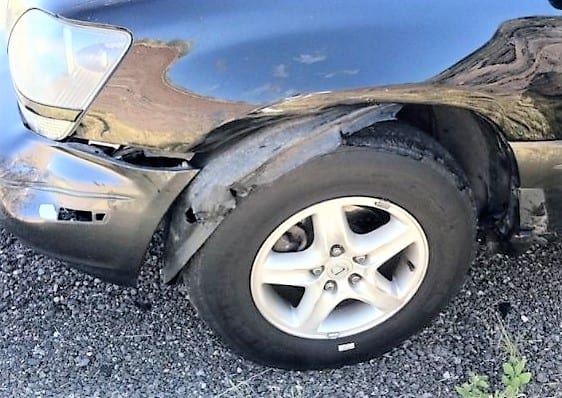
Basically, an underinflated tire will compress, flex and squirm more than it’s supposed to, which causes friction and a buildup of tremendous heat. This can cause entire sections of tread to simply let go, often damaging the vehicle as the heavy rubber flaps and smashes against a fender or, in the worst cases, causing even an experienced and knowledgeable driver to lose control and crash.
In the summer of 2000, the issue of tread separation vaulted into the news after a series of crashes, some deadly, involved Ford Explorers fitted with Firestone tires. The common scenario was that of an Explorer running at highway speed when the Firestone would separate, often on the rear axle, causing the SUV to crash and roll multiple times.
The rollover crashes happened with sickening frequency, causing deaths as Explorers carrying families would roll. It became a national controversy, Ford laying the blame on faulty tires and Bridgestone-Firestone blaming the design of the SUV.
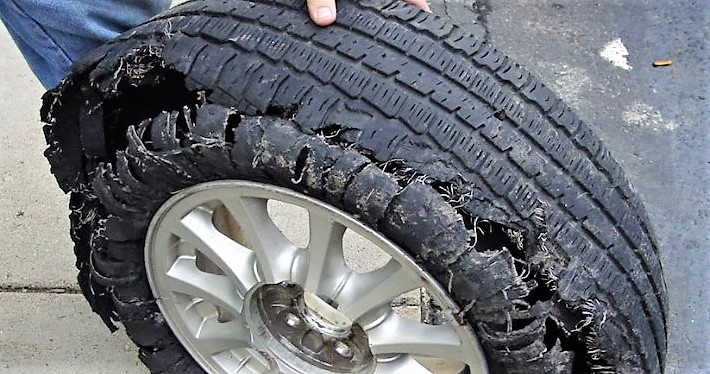
As it turned out after years of legal wrangling and revelations, both the Explorers and the Firestones were blamed for the crashes in a deadly combination of bad ingredients. Research also found that other brands of steel-belted radials could be susceptible to tread separations, and other high-profile vehicles could flip due to a tire failure.
But there was one more element that entered into the discussion, and that was tire inflation. While it was well-known that an underinflated had a higher risk of failure, the Ford Explorer/Firestone debacle brought it to everyone’s attention. It was found repeatedly that underinflated tires were an aggravating factor.
I reported on the Ford/Firestone issue back when I was the auto writer for The Arizona Republic newspaper in Phoenix, and covered the terrible series of crashes. The central deserts of Arizona around Phoenix and Tucson were a focal point of the controversy because of the hot climate. Many of the wrecks caused fatalities and serious injuries.
Hot weather is a leading factor in tread separations resulting from low tire pressure, and in Phoenix when the weather starts to nudge into the triple digits in the spring, the highways become littered with chunks and long strips of tread, which the highway patrol people call alligators.
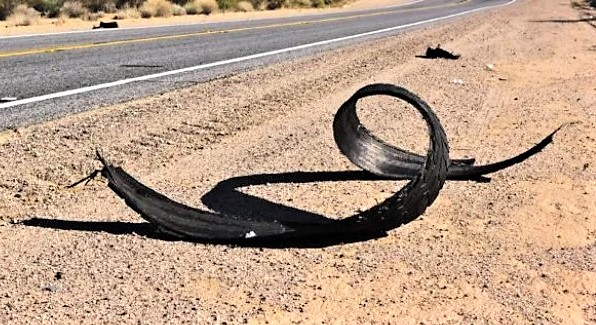
People often blame large semis for tire-tread debris, but the reality is that most often, it’s shed by light trucks and passenger cars. Tires with heavy tread, such as those on larger SUVs and pickup trucks, can be more susceptible to separations.
But just because cooler weather has arrived doesn’t mean you should let down your tire-pressure vigilance. Aside from the obvious extra cost of having to replace tries that prematurely wear out, or enduring compromised handling and traction, the issue of tread separation still remains in winter weather.
That’s because any weakness or hidden damage in the tire, perhaps even from running it too soft in the preceding summer, can cause tread to let loose even in cold weather if it is not properly inflated.
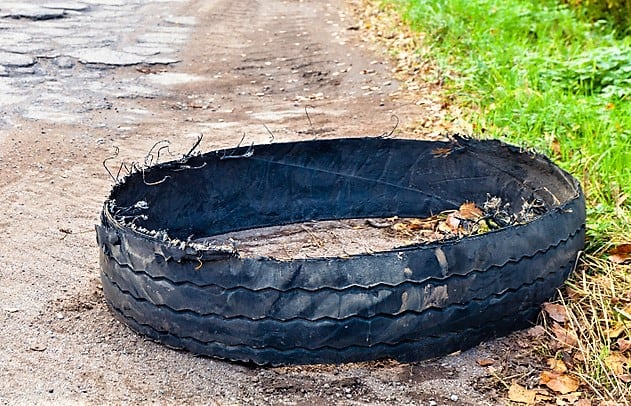
Drivers should check their tire pressures every few weeks with a hand-held pressure gauge, preferably one that is of high quality and known to be accurate. Follow these procedures:
• Tire pressure needs to be checked when they are cold, before the vehicle has been run and the tires warmed up – first thing in the morning is a good time to check. Warmer tires will register higher pressures as the heated air inside expands. Cold tires give a more-accurate reading.
And note that just as warm tires make the pressure go up as the air inside expands, cold weather will cause pressure to go down for the same reason – the air inside contracts when tires are extra cold. Pressure drops 1 pound for every 10-degree reduction in ambient temperature, according to Bridgestone.
• If you have to drive to a public tire inflator, take note as to how many pounds your tire needs when cold so that when you arrive at the inflator with warmed up tires, you’ll still know how many pounds to add. Use your own hand-held pressure gauge as those on the inflators are notoriously inaccurate.
It’s not a bad idea to purchase one of those inexpensive 12-volt tire inflators that plug into the lighter socket. Stow it on board in case you ever need it on the road.
• Keep the tires at the recommended pressure for your specific vehicle, found by checking the pressure listed on a sticker inside the door frame or in the owner’s manual. If you find that the vehicle rides too soft with the recommended pressure, you can add a few pounds but not too much. Never allow the pressure to go below the recommended number.
And note that the maximum pressure listed on the side of the tire is just that, the absolute maximum, not the pressure at which you should inflate it for normal use. It’s typically way too hard. Use the figure provided by the manufacturer.
• Keep an eye on your tires whenever you can. Visually inspect them for low pressure plus wear and damage. While it can be hard to spot low pressure with modern low-profile radial tires, you can usually tell one that is very low visually. If there is any doubt, use your pressure gauge to check.
• Don’t wait for the low-pressure warning light to flash on your dashboard, if your vehicle has that feature. The pressure-monitor warning usually comes on only when it senses severe underinflation, when even slight underinflation can cause problems. Check your pressures proactively, not just when you receive a dire warning.
While it’s often been said that everything’s riding on your tires, too many drivers take them for granted and fail to regularly monitor their air pressures. That can be a deadly mistake.



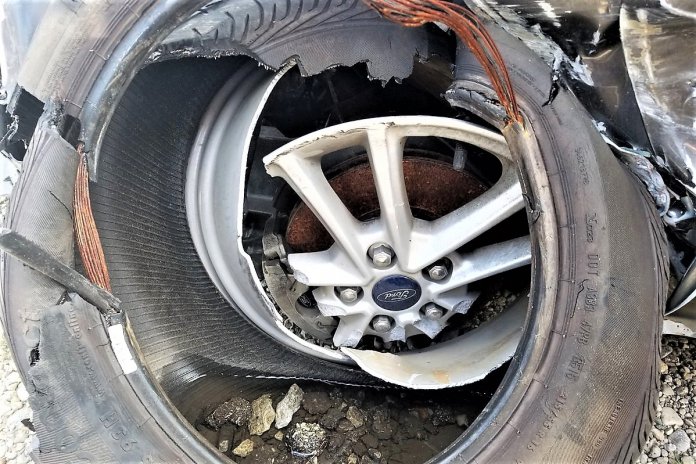


Honestly this is good basic information. If you have kids who are approaching driving age or are already driving, spend a few minutes with them and have them read this. Give them a nice pressure gage and show them how to use it. Also since I am on the subject of tires, have them demonstrate to you how to change a tire, with the equipment that comes with the car. Sounds silly but your children may find themselves with a flat tire far away from home. I trained my daughters on how to change a tire and am proud to say over the years they have exercised that training changing flats. People have asked me what the most significant engineering development in automotive engineering was over the past 100 years. I always reply “tires”, you are not going anywhere without them. Oh, yes, don’t forget the spare tire, check that too.
I USUALLY LOOK AT THE MAX PRESSURE AND TAKE 10% OFF.
LATELY I HAVE CAUGHT GUYS TAKING AIR OUT OF MY TIRES.
I HAVE BF GOODRICH TIRES AND THE ARE 65 LBS MAX.
MY DOOR SAYS 35LB.
(NOT THE SAME TIRES FROM THE MANUFACTURER, DUMMY)
I’ve found that checking air pressure in your tires is best done while the vehicle is not moving. Unless, of course, you want the air hose coiled up.
1970 Cadillac Del Caballero:
Dear Sir,
The 1970 Cadillac Del Caballero that you posted on October 14, 2020, is NOT a replica of the Cadillac El Dorado in the 1972 movie entitled “Superfly!” I repeat, the photo image in your advertisement is NOT a replica of the Cadillac El Dorado driven by Youngblood Priest in the 1972 Superfly movie! The vehicle you have posted resembles the Cadillac El Dorado driven by Max Julien in the 1973 movie “The Mack.”
Sorry, but you are totally wrong. This car is more similar to the Super Fly ride than the one in The Mack, although they are along the same lines. You should watch some of Super Fly, as I did, so you’d see. Also, a custom Caddy like this was also seen in the James Bond movie, Live and Let Die.